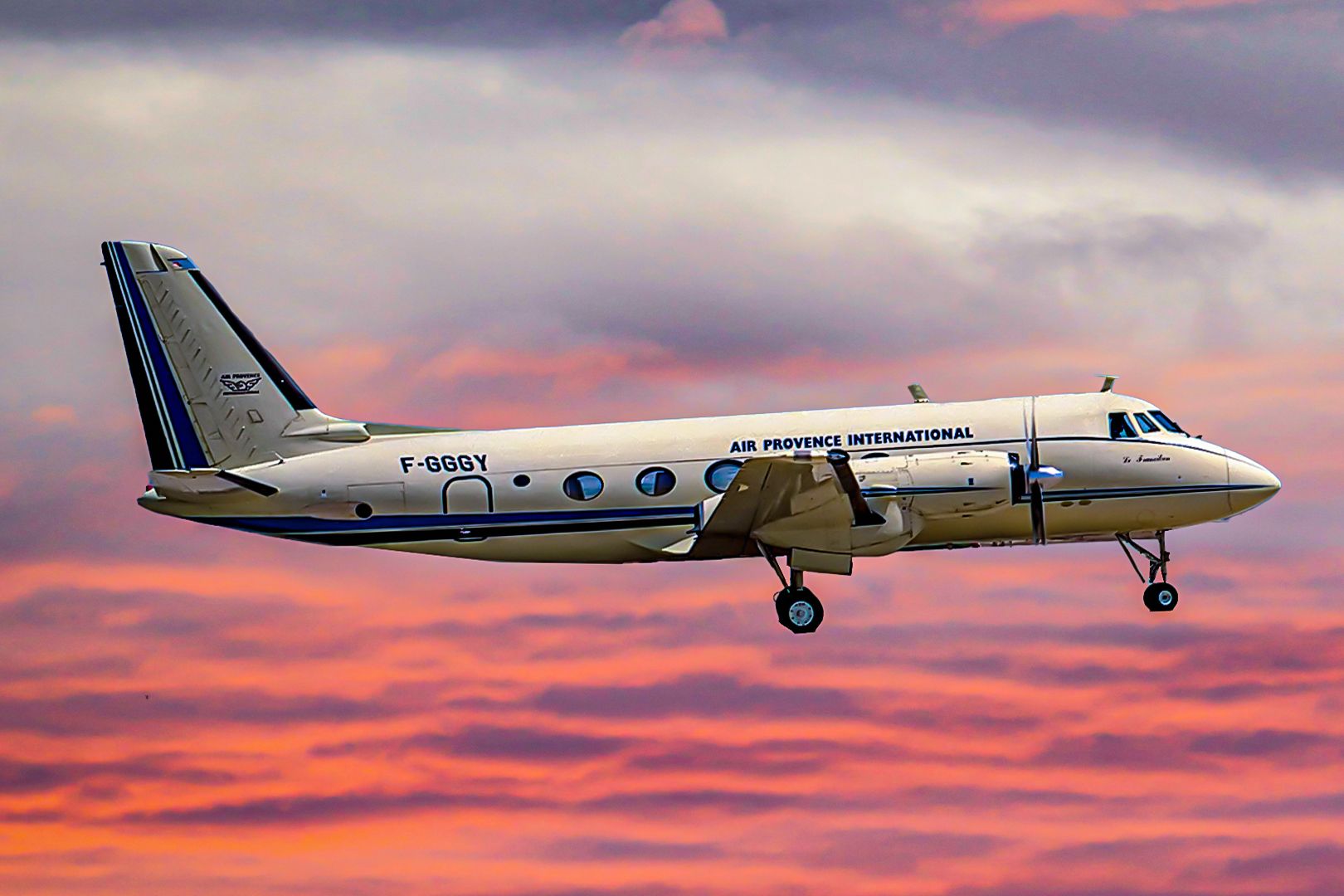Summary Grumman manufactured successful naval fighters during World War II & ventured into private commuter planes. The G-21 Goose was Grumman's first civilian aircraft with amphibious capabilities, also used as a transport plane. Grumman's G-73 Mallard, designed for regional commuter services, had a limited production run of 59 units.
The Grumman Aircraft Engineering Corporation was a US-based military and civilian aircraft manufacturer. The company was founded in 1929 by Leroy Grumman and merged with Northrop Corporation in 1994 to form Northrop Grumman. During World War II, the company manufactured several naval fighters which became some of the most successful fighters of the Second World War.

Around the same time, Grumman manufactured several private commuter planes, primarily targeting wealthy business groups and small utility service companies. While Grumman is known for manufacturing the early Gulfstream jets, this article notes the company’s private airplanes before the Gulfstream I. The Grumman G-21 Goose Crew : 1-3 Capacity : 5-7 Length : 38 ft 6 in (11.
73 m) Wingspan : 49 ft 0 in (14.94 m) Height : 16 ft 2 in (4.93 m) Gross weight : 8,000 lb (3,629 kg) Powerplant : 2 × Pratt & Whitney R-985-AN-6 Wasp Junior 9-cylinder air-cooled radial piston engines, 450 hp (340 kW) each In the mid-1930s, Grumman designed an eight-seat commuter amphibious flying boat for the Long Island, NY, businessmen community.
The aircraft performed its first flight in May 1937 and entered service the same year. It was Grumman's first civilian aircraft to enter service. Targeted to select a billionaire audience, the initial G-21s were configured for 2-3 passengers and featured a small bar and a lavatory.
Having a maximum capacity of eight people, including a pilot, the type was also marketed to small air carriers. At the onset of World War II, the Goose became a transport plane for the US military. Maximum speed : 201 mph (323 km/h, 175 kn) at 5,000 ft (1,500 m) Cruise speed : 191 mph (307 km/h, 166 kn) at 5,000 ft (1,500 m) Range : 640 mi (1,030 km, 560 NM) Service ceiling : 21,300 ft (6,500 m) The US Army Air Corps (USAAC) purchased several units for military transport.
The US Coast Guard and the Royal Canadian Air Force used the type for various transport, rescue, and training roles. After the war, the type continued service as a civilian aircraft, enabling private travel to many locations, including Alaska, Catalina, and the Caribbean. A total of 345 G-21 Goose were built.
The US manufacturer produced some fine examples of flying boats over the years. Grumman G-44 Widgeon Crew : 1 Capacity : 4 passengers (as utility aircraft) Length : 31 ft 1 in (9.47 m) Wingspan : 40 ft 0 in (12.
19 m) Height : 11 ft 5 in (3.48 m) Gross weight : 4,525 lb (2,053 kg) Powerplant : 2 × Ranger L-440-5 air-cooled inverted six-cylinder inline engine, 200 hp (150 kW) each In the late 1930s, Grumman developed the G-44 Widgeon, a five-person amphibious aircraft designed for various military and civilian applications. Initially operated by various divisions of the US military, the Widgeon was later redesigned for civilian operations.
The improvements included improved water handling, six seats, and a new hull. In addition to 200 military-based versions, Grumman built 76 new G-44As, supporting numerous civilian missions. Another 41 examples were built, as SCAN 30, under license by the Société de construction aéronavale (SCAN) in La Rochelle, France.
Maximum speed : 153 mph (246 km/h, 133 kn) Cruise speed : 138 mph (222 km/h, 120 kn) Range : 920 mi (1,480 km, 800 NM) Service ceiling : 14,600 ft (4,500 m) About 70 Widgeons were converted to “Super Widgeons,” replacing the engines with Avco Lycoming GO-480-B1D flat-six piston engines, each generating 270 hp (200 kW) at takeoff. Other major modifications included increased Maximum Takeoff Weight (MTOW), three-bladed propellers, modern avionics, and larger cabin windows. The Grumman Gulfstream I led to the evolution of the Gulfstream brand and the development of subsequent business jets.
Grumman G-73 Mallard Crew : two Capacity : 10 passengers Length : 48 ft 4 in (14.73 m) Wingspan : 66 ft 8 in (20.32 m) Height : 18 ft 9 in (5.
72 m) (on landing gear) Gross weight : 12,750 lb (5,783 kg) Fuel capacity : 380 US gal (320 imp gal; 1,400 L) Powerplant : 2 × Pratt & Whitney R-1340-53H1 9-cylinder air-cooled radial engine, 600 hp (450 kW) each (takeoff power) Building on the success of Goose and Widgeon, Grumman developed a twin-engine medium amphibious aircraft in the 1940s. Designed for private charter and regional commuter services, the aircraft has a capacity of ten passengers and two pilots. Featuring a tricycle landing gear and retaining most features from the previous designs, the type flew several harbor-based city-to-city routes.
The Mallard is powered by two Pratt & Whitney R-1340-53H1 9-cylinder air-cooled radial engines, each producing approximately 600 hp (450 kW) of takeoff power. Maximum speed : 187 kn (215 mph, 346 km/h) at 6,000 ft (1,800 m) Cruise speed : 160 kn (180 mph, 290 km/h) at 8,000 ft (2,400 m) (55% power) Range : 1,200 NM (1,380 mi, 2,220 km) with 810 lb (370 kg) payload Service ceiling : 23,000 ft (7,000 m) The wingtip fuel tanks of the G-21 Goose provided the additional range required to cover longer routes. With 810 lb (370 kg) of payload, the twin-prop can fly to a range of 1,200 NM (1,380 mi, 2,220 km).
Only a small number (59 units) of G-73 Mallards were produced between 1946 and 1951. Grumman created a separate aircraft OEM with its Gulfstream subsidiary..



















